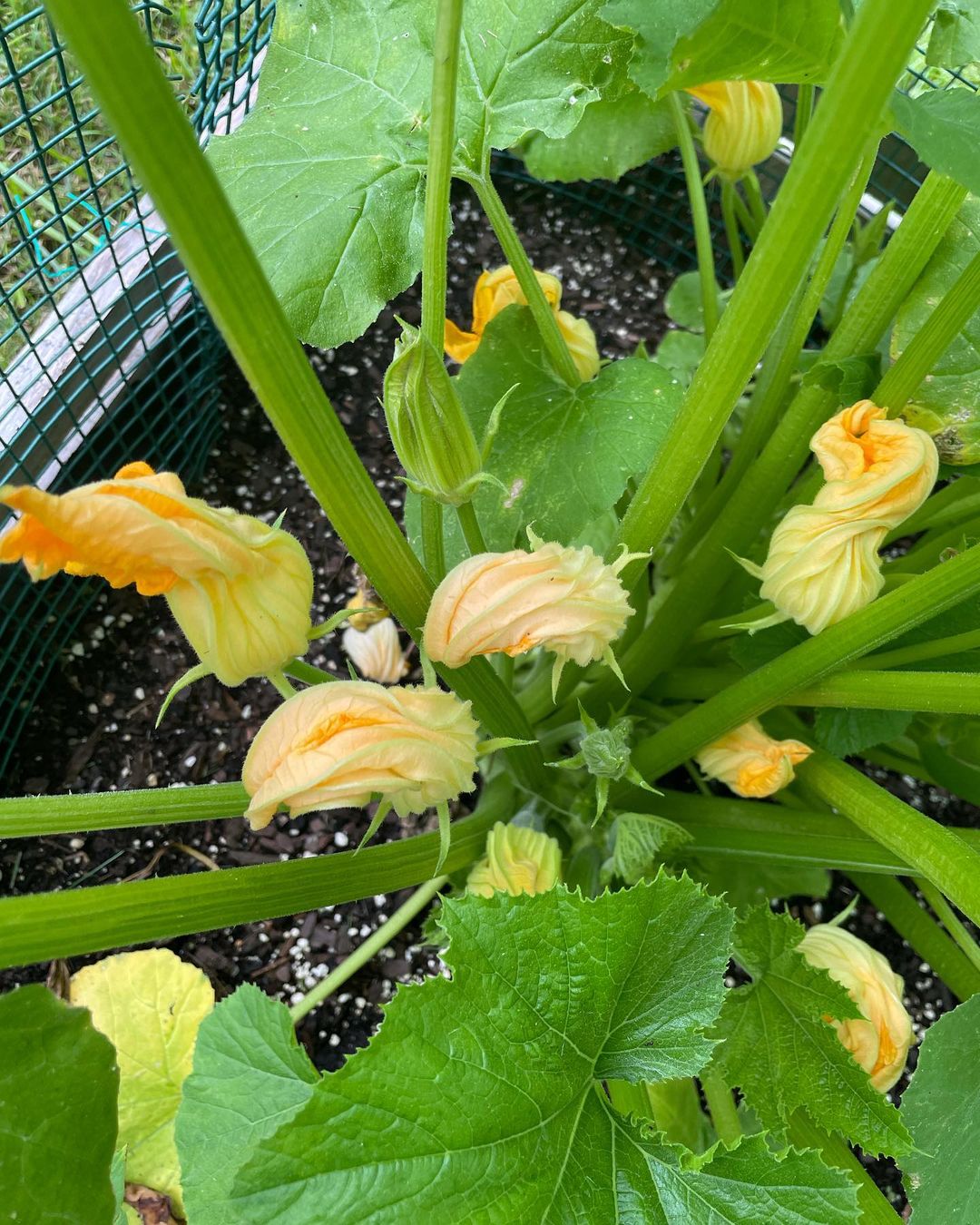If you plant Zucchini which matures with no female flowers, it’s a matter of concern as the plant won’t be able to develop fruit without a female flower.
Poor airflow due to lack of proper plant spacing may be one reason for no female Zucchini flowers.
So, go through this article to know the actual reason behind no flowers in your Zucchini and failproof solutions to overcome the problem.
Table of Contents Show
Reasons Behind No Female Flowers In Zucchini
Zucchini produces both male and female flowers in a single plant where male flowers are smaller with yellow pollen in them.

Meanwhile, female flowers are larger than male flowers and contain small fruit-like bulges on the back of the flower.
1. Immature Plant
The Zucchini plant cannot produce flowers and fruits if they aren’t mature enough, as the male flowers appear before the female ones.
As the plant matures, it starts producing both flowers simultaneously, which develop into fruit on pollination.
In the immature stage, the Zucchini plant focuses on vegetative growth by developing a healthy root system.
Upon maturity, the female flower is important for producing fruits as it contains an ovary to pollinate with the male flower’s pollen.
2. Temperature Issues
The Zucchini plant won’t produce female flowers if the surrounding temperature is constantly changing.
Too hot or too cold temperature not only hinders flower production but also halts the overall vegetative growth.
Thus, the delay in flowering and lack of female flowers may be due to the stress on plants from inappropriate temperatures.
Treatment And Preventive Measures
- Consider planting Zucchini in early spring to take advantage of cool temperatures.
- Mulch around the base of the plant if the temperature is very cold or hot.
- Prepare a straw shade for your Zucchini during extremely hot temperatures.
- Plant heat-tolerant varieties that can handle hot temperatures.
- Use frost blankets to save your Zucchini from freezing cold.
3. Fertilizer Problems
Your Zucchini plant is probably lacking female flowers because you are feeding it too much.
Moreover, the fertilizer high in nitrogen will promote vegetative growth, hindering flower production.
Zucchini needs balanced fertilizer with NPK value 5-6-8 or 3-4-4 that induces female flowers for fruit development.
However, avoid overfertilizing as high fertilizer may burn the plant, causing overall plant damage.
You can also switch to homemade compost, which is safe from chemicals and provides essential nutrients.
4. Poor Sunlight
Sunlight is a vital component in developing flowers and fruits in Zucchini. Lack of sunlight may develop little or no flower.
Basically, Zucchini needs 6-8 hours of direct sunlight to trigger proper flower and fruit development.
Moreover, if sunlight isn’t enough, the plant will struggle with vegetative growth and avoid producing flowers until the stress is gone.
Treatment And Preventive Measures
- Plant Zucchini in a location that receives enough sunlight.
- Prepare dappled light during too hot days as too high sunlight is also harmful.
- Provide 16-18 hours of artificial light if the plant is not getting enough light.
- Prune the bushy plant so that the light reaches well towards every part of the plant.
- Reflective mulch around the base of the plant will be beneficial to provide enough light.
5. No Pollination
Even if you take care of every ideal condition, your Zucchini won’t be able to produce any female flowers due to pollination issues.
Pollination issues may develop very few female flowers if your garden lacks pollinators like bees, butterflies, and insects.
You can plant Zucchini in groups to encourage pollen to reach into female flowers for a successful fruit set.
Treatment And Preventive Measures
- Plant attractive flowering plants to attract pollinators.
- Avoid the use of pesticides, as pollinators will ignore the plants with pesticides.
- Try hand pollination if no pollinators visit your garden.
- Invite bees into your garden by placing hollow stems of wood as their shelter.
6. Pests And Diseases
These plant problems cause the scarcity of female flowers in the Zucchini plant.
Pests and diseases cause stress to the plant, making it focus on vegetative safety rather than flower production.
Mealybugs, spider mites, aphids, etc., are insects causing several problems like leaf spots, yellowing, leaf fall, etc.
Furthermore, overwatering may also invite fungal pathogens causing dangerous diseases like root rot, drooping, wilting, etc.
Treatment And Preventive Measures
- Prune and discard the diseased parts as soon as possible.
- Use pesticides, fungicides, or neem oil to save the plant from further invasion.
- Use disease-resistant varieties to avoid such problems with your Zucchini.
- The biological control method will be beneficial, making your plant free from chemicals.
- Water Zucchini only when the top 2 inches of the soil are dry to prevent fungal infection.
From Editorial Team
Know The Early Flowering And Late Flowering Zucchini Varieties
Early flowering Zucchini varieties produce female flowers quickly after developing male flowers. Meanwhile, late flowering varieties take time to develop female flowers.
Some early flowering Zucchini varieties are Black Beauty, Gold Rush, etc., whereas late flowering varieties include Costata Romanesco, Tromboncino, etc.


